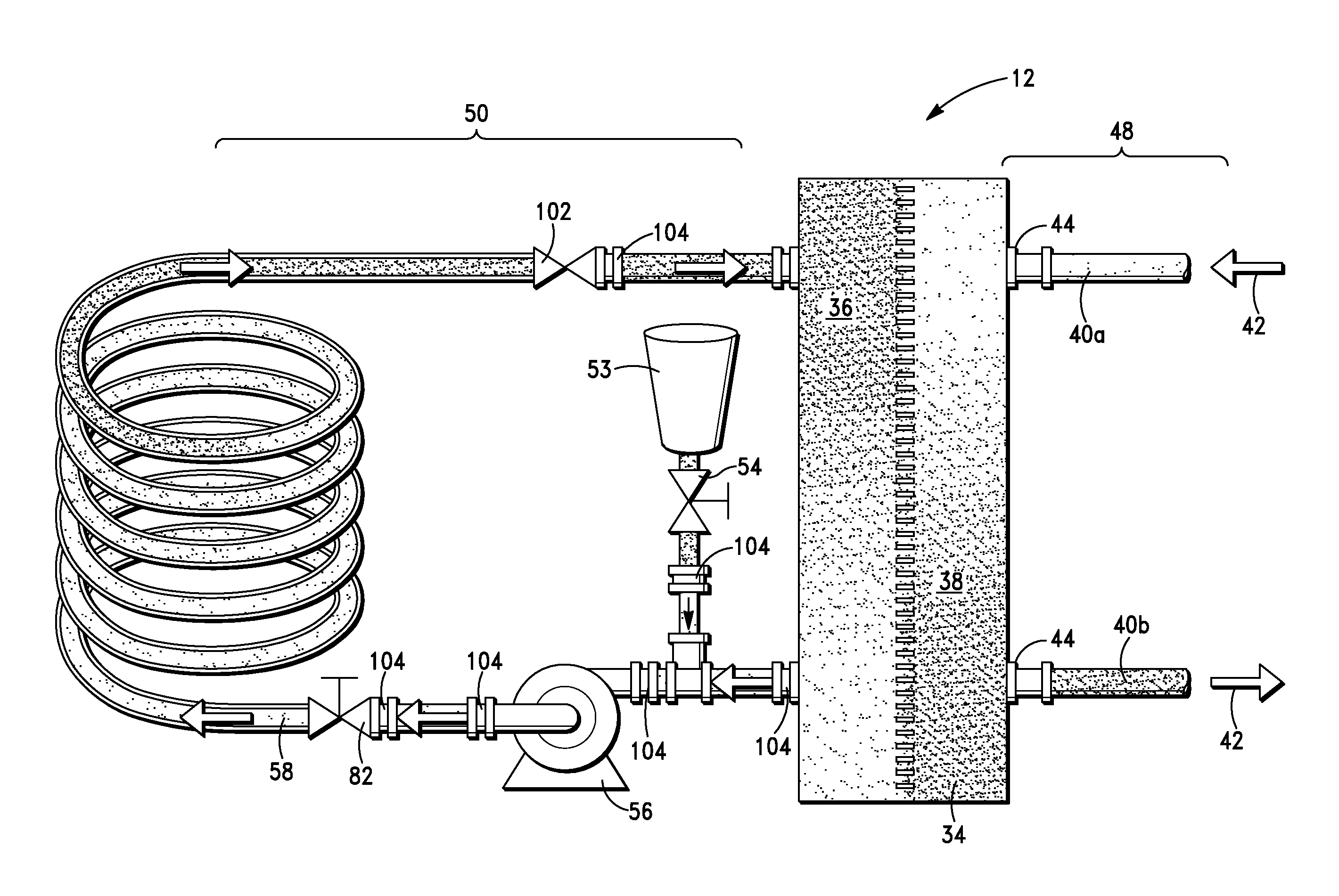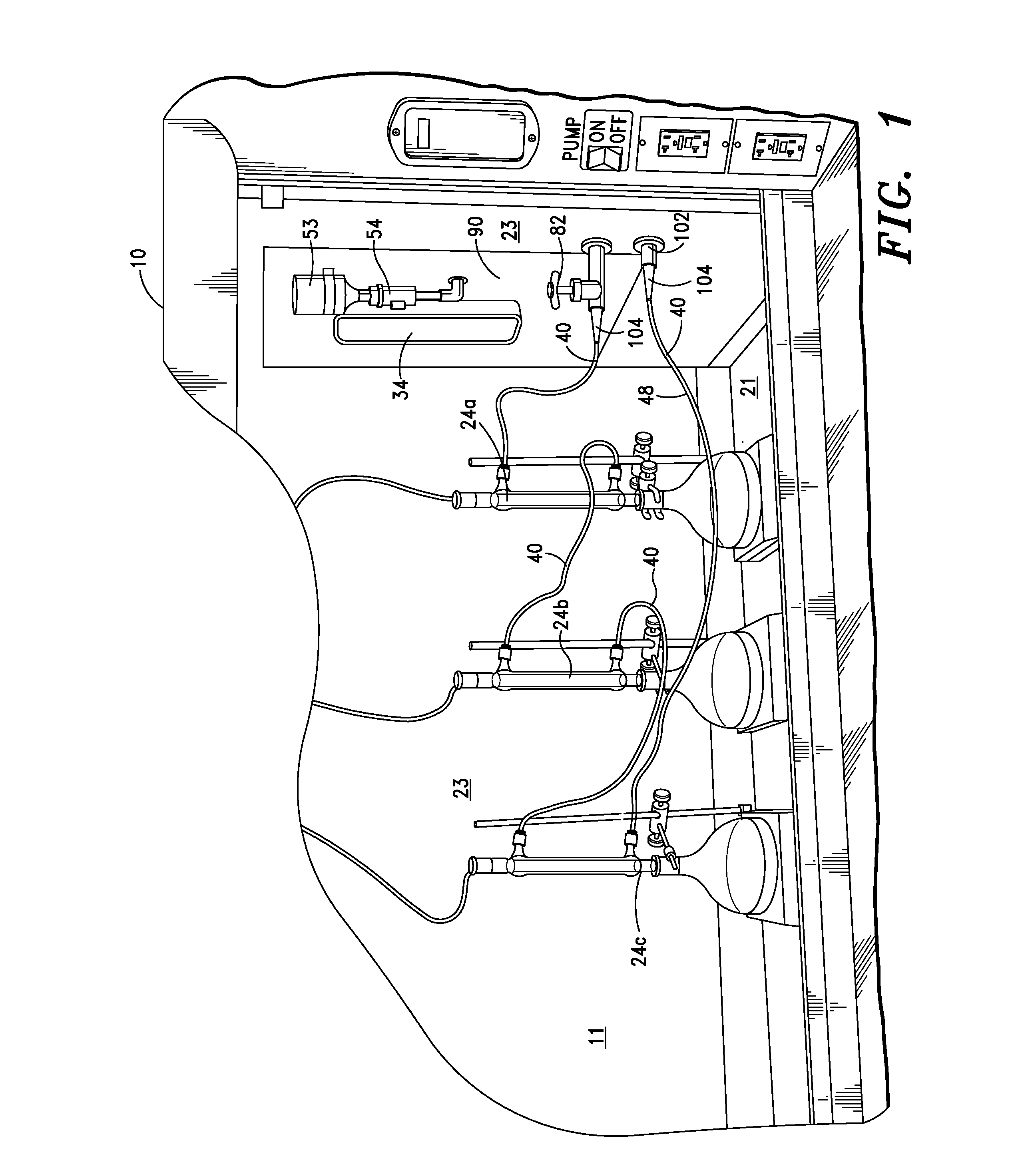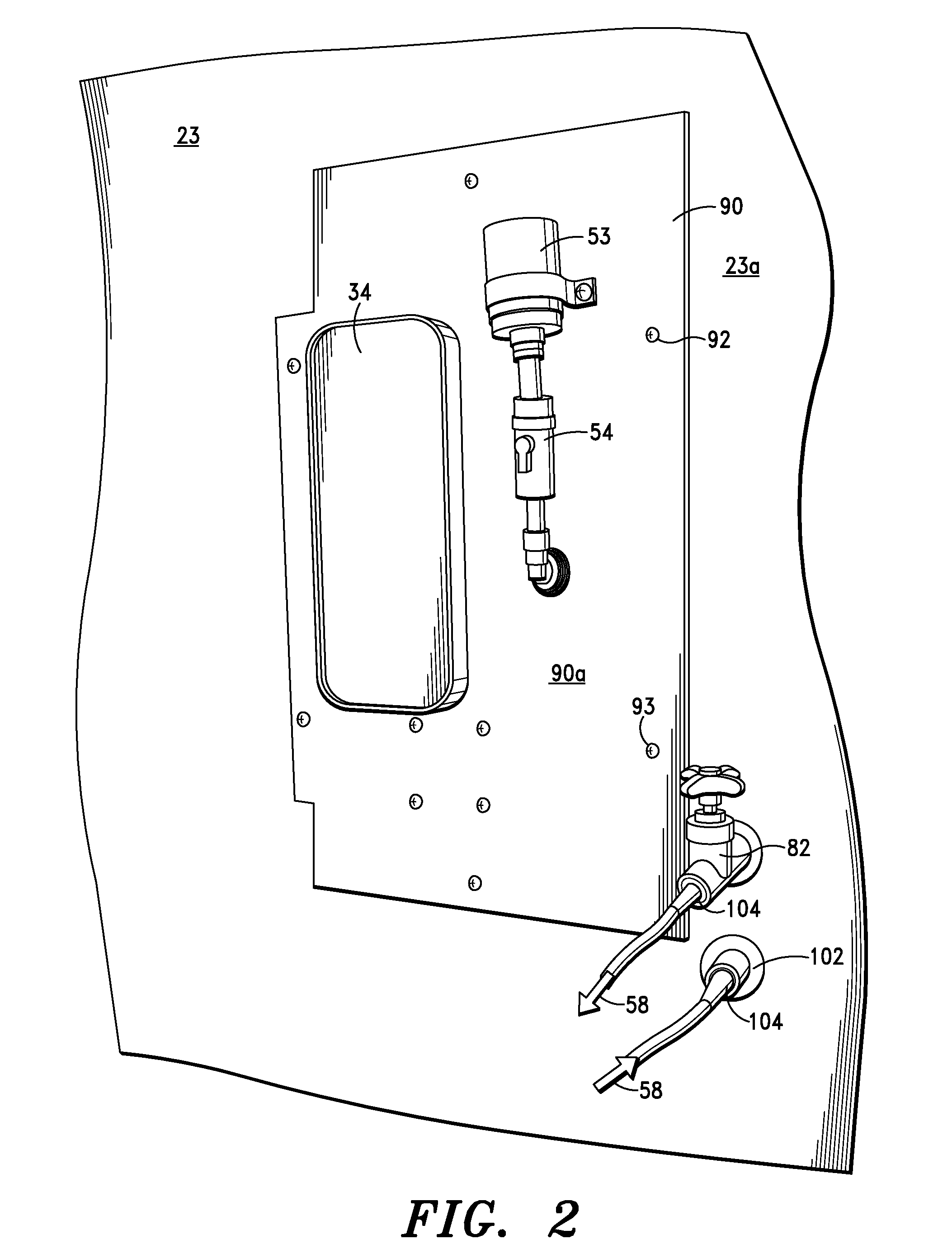Laboratory Fume Hood System Having Recessed Heat Exchanger System
a technology of heat exchanger and fume hood, which is applied in ventilation systems, heating types, stoves or ranges, etc., can solve the problems of reducing the risk of leakage or flooding within the interior work area of the fume hood and/or the surrounding laboratory, and achieve the effect of reducing the risk of leakage or flooding
- Summary
- Abstract
- Description
- Claims
- Application Information
AI Technical Summary
Benefits of technology
Problems solved by technology
Method used
Image
Examples
example
[0043]A laboratory fume hood system was constructed. The heat exchanger was a brazed plated heat exchanger (AIC L-Line Series, LB31-10, 90,000 BTU / hour, 6.2 GPM, 5.1 psi). The primary loop comprised a chilled water supply maintained at about 48° F. and about 15 psi and circulated through a stainless steel hose (90 psi). The secondary fluid loop comprised a March AC-3CP-MD variable volume pump (10 GPM, maximum head 50 psi). Various 90 degree hose fittings and union tees (G. A. Murdock, Q0820816, V0820826) were used to connect the polyethylene tubing.
PUM
| Property | Measurement | Unit |
|---|---|---|
| temperature | aaaaa | aaaaa |
| exit temperature | aaaaa | aaaaa |
| temperature | aaaaa | aaaaa |
Abstract
Description
Claims
Application Information
 Login to View More
Login to View More - R&D
- Intellectual Property
- Life Sciences
- Materials
- Tech Scout
- Unparalleled Data Quality
- Higher Quality Content
- 60% Fewer Hallucinations
Browse by: Latest US Patents, China's latest patents, Technical Efficacy Thesaurus, Application Domain, Technology Topic, Popular Technical Reports.
© 2025 PatSnap. All rights reserved.Legal|Privacy policy|Modern Slavery Act Transparency Statement|Sitemap|About US| Contact US: help@patsnap.com



